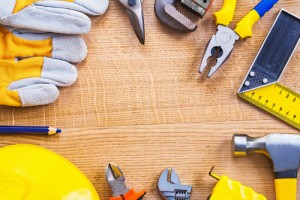
Growing up my grandmother used to tell me that “an ounce of prevention is worth a pound of cure.” I can only presume she was talking about plumbing maintenance.
Seriously, have you called a plumber recently? It costs you an arm and a leg just to get them to answer the phone!
So instead of flushing your hard earned money quite literally down the drain, stay ahead of the game with Consolidated Plumbing’s maintenance tips for pipes and plumbing fixtures.
A cheap solution for slow bathroom drains
For sluggish drains in your sink and bathtub, skip the commercial plumbing products aisle and head straight for the kitchen.
Pour one tablespoon of ordinary table salt and one quarter-cup of plain white vinegar down each drain and allow it to sit for an hour. Then, run steaming hot water through to wash out all the gunk. Voila! For best results, repeat the process.
Avoid chemical-based pipe cleansing solutions as they can actually do more harm than good.
Speaking of vinegar—to remove calcium deposits from one of your faucets, simply tie a plastic bag around the fixture and fill it half with water and half with vinegar. Let it sit for an hour or so, then rinse and polish. The same trick works for shower heads.
Check for galvanic connections
Many older homes contain a “selection” of piping materials behind the walls following year after year of upgrades, repairs, re-dos and patch jobs.
Using both copper and steel isn’t necessarily a no-no, but direct copper to galvanized connections are a huge risk for fast corrosion. In locations where you see galvanic connections, install a special fitting called a dielectric union to join copper pipe to galvanized steel.
Draw a piping map
Driving a nail through your piping to hang shelves or put up a picture can be a costly mistake. It’s a good idea to consult your piping schematics before breaking out the hammer or drill.
If you don’t have access to the drawings, many stud finders are also capable of locating hidden pipes.
A tiny leak is no problem, right?
An easy way to allow a small leak to turn into a big problem is to leave it alone.
Moisture inside and around a fixture can cause mold and mildew and lead to a much more expensive repair than simply patching up a leaky faucet. The time to fix any water-based problem in the home is as soon as you become aware of its existence.
The power of hot water
Believe it or not, keeping your kitchen drain and piping sparkling clean and flowing like new is as simple as running boiling hot water and dish soap down the drain once a month. Squeeze a generous portion of dish soap down the drain and then slowly pour through a couple quarts of boiling water.
Even a few minutes of your tap at its warmest setting will melt grease and prevent clogging.
Occasionally flush kitchen/sink faucets
It’s not uncommon for small amount of debris to build up in your plumbing system. If you’re experiencing lower than normal flow out of your faucets, consider doing a system flush.
Remove aerators from all faucets and run both the hot and cold taps on high for two minutes, rinsing the aerator screens under the water during the flush.
Clogs can cause damage
Blockages in your wastepipes are most than just a nuisance. The added pressure can cause long-term damage and reduce the life of your plumbing.
The best way to clear a clog is to make sure it doesn’t form in the first place. Avoid throwing food scraps into the kitchen sink and install screens on sinks and tubs to keep hair out of the drainpipe.
Under pressure
Normal water pressure should be between 40 and 85 psi. Measure your pressure with a hose bib gauge (under ten bucks), and if your pressure exceeds the recommended range, consider the installation of a pressure reducer. It’ll cost you a few hundred bucks now but could prevent burst pipes and connections down the line.
